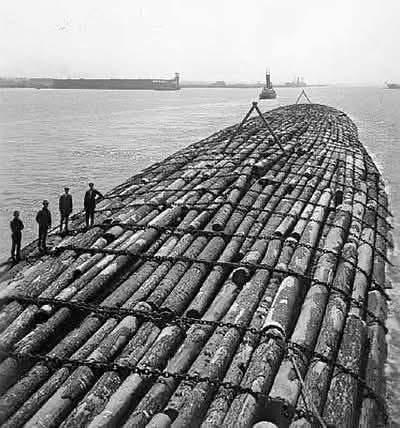
The 1914 voyage of the massive floating timber raft from Oregon to San Diego is a fascinating and often overlooked chapter in maritime and industrial history. Here’s a deeper look at the significance and details of this incredible endeavor:
Engineering and Construction of the Raft
- The raft was an enormous structure, measuring 700 feet long—longer than many ocean liners of the time.
- It was constructed by tightly chaining together thousands of logs, forming a floating platform capable of carrying 5 million board feet of lumber (enough to build hundreds of houses).
- The design had to account for ocean currents, storms, and structural integrity, requiring precise engineering to prevent the logs from breaking apart.
The Journey: Challenges and Navigation
- The 1,200-mile voyage down the Pacific Coast was perilous, with risks of storms, rogue waves, and shifting cargo.
- Unlike a traditional ship, the raft had no propulsion of its own—it was likely towed by steamships or relied on currents and sails.
- The crew (if any were aboard) would have faced harsh conditions, constantly checking the chains and stability of the logs.
Economic and Historical Significance
- This experiment reflected the booming lumber industry of the Pacific Northwest, where vast forests supplied materials for America’s rapid urbanization.
- Traditional shipping methods (loading logs onto steamers) were costly, so this low-cost, high-risk alternative was an innovative, if unconventional, solution.
- While it’s unclear if this method became common, it demonstrated the bold problem-solving of early 20th-century industries.
Legacy and Why It’s Forgotten
- The journey was likely a one-time feat—no records suggest it became a standard practice, possibly due to the risks involved.
- By the 1920s–30s, improved railroads and shipping made such daring ventures unnecessary.
- Today, it remains a quirky footnote in maritime history, symbolizing the wild ingenuity of pre-modern logistics.
Leave a Reply